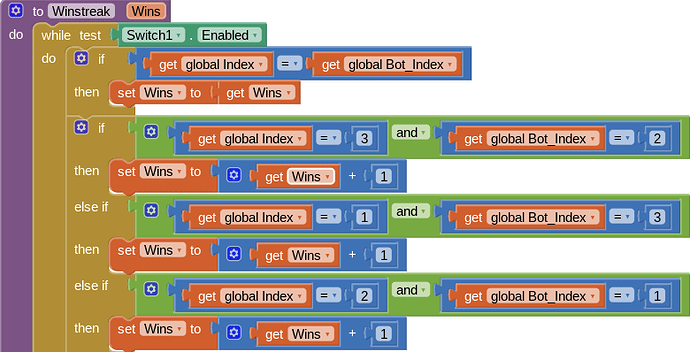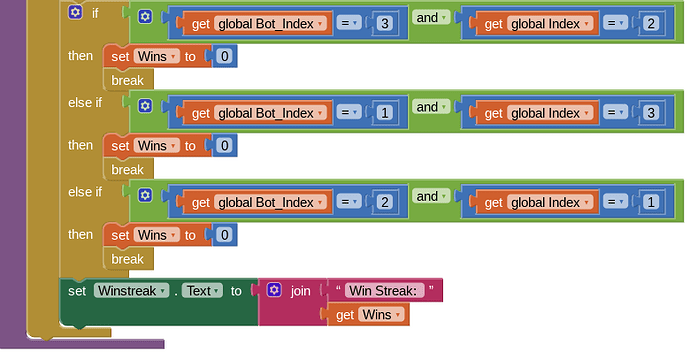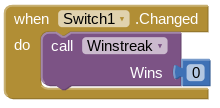To loop, you need a data structure to loop over, for example doing a table lookup.
This just like a jogger, who needs a jogging path to run. Standing in place and stomping your feet doesn't count.
Imagine you had a table of RPS rules, with three columns:
- Player 1 choice ("rock", "paper", "scissors")
- Player 2 choice ("rock", "paper", "scissors")
- winner (1,2,0 )
Since there are three times 3 = 9 combinations, there would be 9 rows in that table.
That table has the rules for playing RPS, for example some of the rows would read
rock,paper,2 because paper covers rock, and
paper,rock,1 for the opposite combination, and
rock,rock,0 because rock vs rock is a draw.
So imagine a procedure that received 2 parameters for the player choices, and returns 0,1,2 based on its table lookup.
The loop would be in the procedure, as it goes through indexes 1-9 and compares columns 1,2 against the 2 parameters to see which row matches the input. Return value would be 0,1,2 based on the lookup.
That gives you a loop and parameters.
(Advanced list blocks could do it in one block, but you have to learn to walk before you learn to run.)
P.S. A table based solution also has the advantage of extensibility. For example, you could add a 4th option ("lemon meringue pie") just by adding extra rows to the table. (In addition to an extra Button and picture.) I leave it to you to figure out how to play the Lemon Meringue Pie choice.
http://www.appinventor.org/bookChapters/chapter21.pdf


